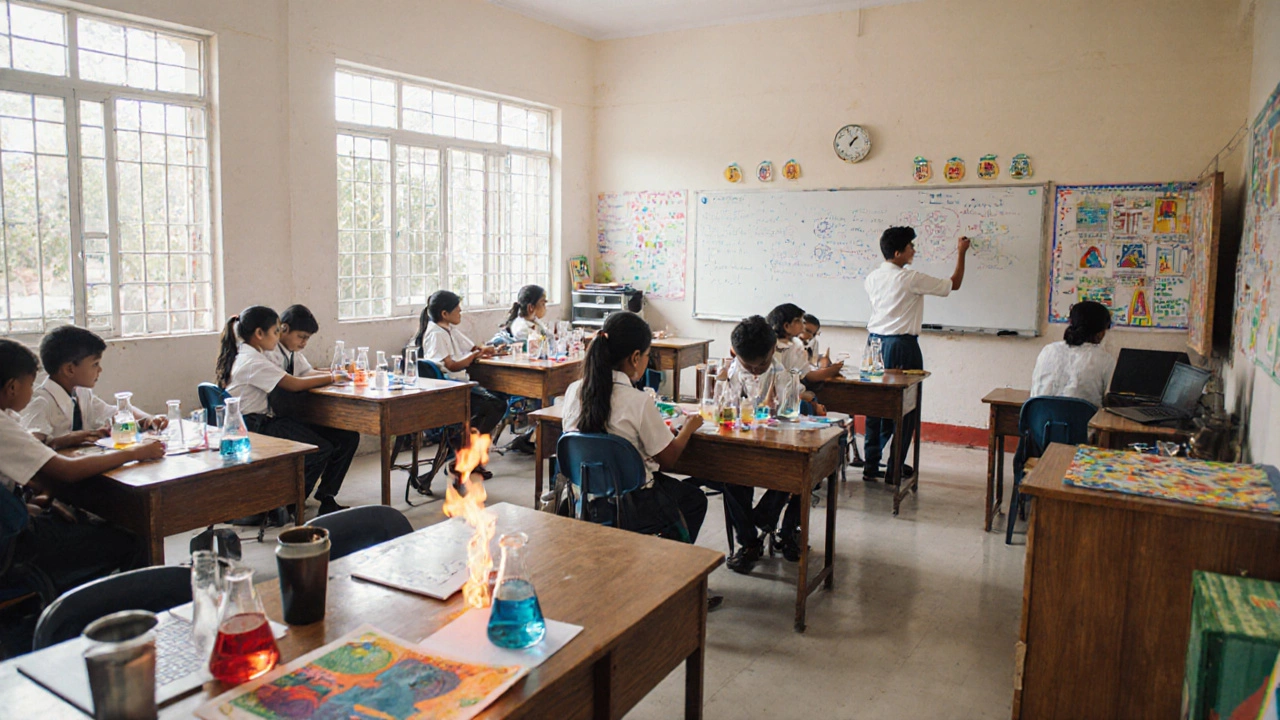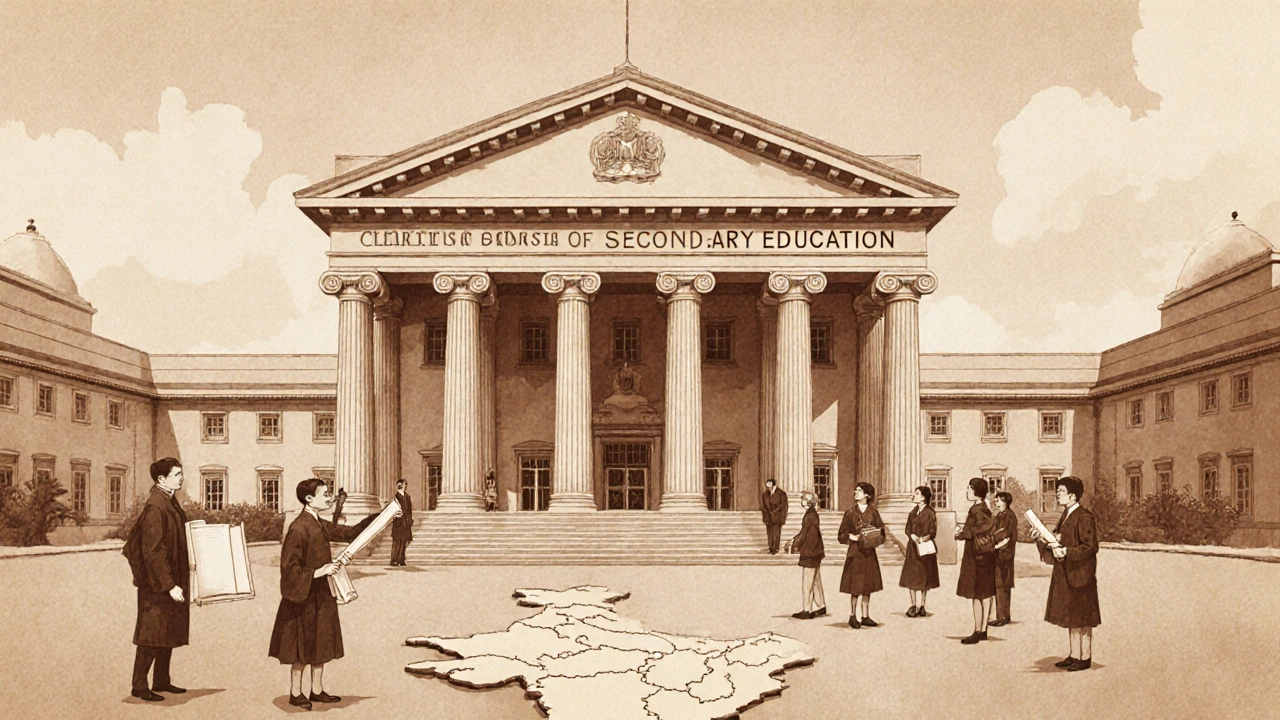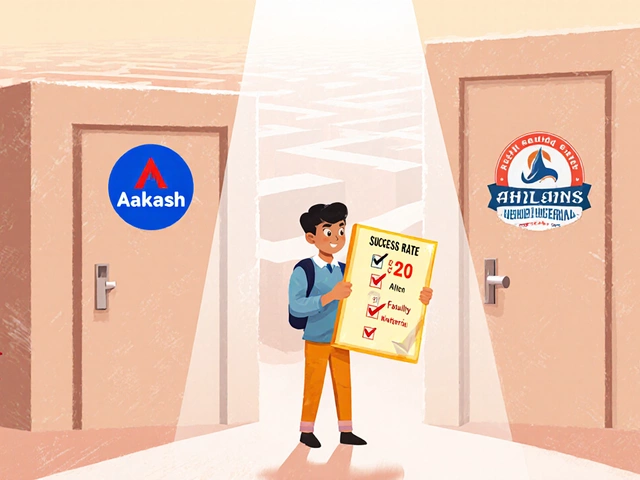CBSE Grade Calculator
Enter your marks (0-100) to see your CBSE grade according to the official grading scale:
When you hear “CBSE”, you’re probably wondering what the letters actually stand for. Central Board of Secondary Education, often shortened to CBSE, is the national board that designs and administers school curricula for millions of students across India. In this guide we’ll break down its full form, trace its history, unpack how the syllabus works, and clear up common myths. By the end you’ll know exactly why CBSE matters for your child’s education, college prep, and competitive exams.
Where CBSE Came From
The board was founded in 1962 under the Ministry of Education, aiming to create a uniform, high‑quality curriculum for both government and private schools. Its charter emphasized a science‑based, language‑friendly approach that could scale nationwide. Over the decades, CBSE has expanded its reach to over 28,000 affiliated schools, making it the largest educational board in the country.
CBSE’s Place in the Indian Education System
India’s education landscape is a patchwork of boards: National Council of Educational Research and Training (NCERT) creates the textbooks, while CBSE adopts those textbooks and adds its own assessment standards. State boards govern regional curricula, and the ICSE board offers an alternative with a stronger emphasis on English. CBSE’s alignment with national policies means its exams often serve as the baseline for nationwide competitive tests like JEE Main and NEET.
Understanding the CBSE Syllabus
The CBSE syllabus is organized into three major stages: Primary (Classes1‑5), Middle (Classes6‑8), and Senior (Classes9‑12). Each stage balances core subjects-Mathematics, Science, Social Science, and Languages-with electives that let schools tailor offerings to local needs.
- Core subjects: Mathematics, Physics, Chemistry, Biology, English, Hindi, and a regional language.
- Electives (Senior stage): Computer Science, Physical Education, Business Studies, Economics, and Fine Arts.
- Assessment pattern: Theory papers, practical exams (especially for Science subjects), and project work.
Since 2020 CBSE introduced “Skill‑Based Learning” modules that sprinkle coding, financial literacy, and environmental studies throughout the curriculum, keeping students ready for the digital age.
How the Board Exams Work
The two keystone assessments are the Class 10 board exams and the Class 12 board exams. Both are held in March‑April each year and follow a similar structure:
- Theory paper: 80‑100 marks, multiple‑choice and short‑answer questions.
- Practical component (Science streams only): 20‑30 marks, graded on lab work.
- Internal assessment: Projects, seminars, and periodic tests that contribute 20% of the final score.
From 2023 onward CBSE also offers the “Continuous and Comprehensive Evaluation (CCE)” approach for Classes6‑10, aiming to reduce exam pressure by spreading assessment throughout the year. While CCE’s formal reporting has been rolled back for senior classes, its spirit lives on in periodic quizzes and project work.

Key Features That Set CBSE Apart
Several initiatives make CBSE distinct:
- Uniform grading: All schools use the same grading scale (A1‑E), making results comparable nationwide.
- Digital exam portal: Since 2021 students can download answer keys, check scores, and apply for re‑evaluation online.
- Skill‑based modules: Coding basics are introduced as early as Class6, aligning academia with industry needs.
- Inclusive policies: Extra time, larger print question papers, and dedicated language support for differently‑abled learners.
CBSE vs. Other Boards - A Quick Comparison
| Aspect | CBSE | ICSE | State Boards |
|---|---|---|---|
| Curriculum focus | Science & math oriented, aligns with national exams | Balanced emphasis on English literature and humanities | Varies by state; often regional language heavy |
| Number of affiliated schools | ~28,000 | ~2,500 | ~150,000 (combined across states) |
| Exam pattern | Theory + practical; CCE for lower grades | Theory heavy; optional practicals | Varies widely; often regional language papers |
| Recognition for competitive exams | Preferred for JEE, NEET, CLAT | Accepted but requires conversion for some exams | Accepted after board‑specific conversion formulas |
Common Misconceptions About CBSE
Myth 1: “CBSE is only for science students.” Not true. While the board’s reputation leans toward strong STEM outcomes, its arts and commerce streams are equally robust, offering subjects like Psychology, Business Studies, and Home Science.
Myth 2: “CBSE exams are easier than other boards.” Difficulty is subjective; CBSE’s syllabus aligns closely with national competitive exams, so it can feel tougher for students aiming for engineering or medical seats.
Myth 3: “All CBSE schools follow the exact same teaching methods.” The board sets standards, but individual schools have freedom to incorporate project‑based learning, digital classrooms, or experiential outings.

How to Verify if a School Is CBSE‑Affiliated
Finding a legitimate CBSE school is straightforward:
- Visit the official CBSE website and use the “Affiliation Search” tool.
- Enter the school’s name or location; the portal will list its affiliation number, validity period, and any pending dues.
- Cross‑check the school’s brochure for the CBSE logo and the phrase “Affiliated to Central Board of Secondary Education” printed on the first page.
Always ask to see the latest affiliation certificate; genuine schools renew it every three years.
Preparing for CBSE Board Exams - Practical Tips
- Start early: Break the syllabus into monthly buckets; aim to finish the first draft of notes by the end of September.
- Use NCERT textbooks: CBSE questions are largely drawn from NCERT examples and end‑of‑chapter exercises.
- Practice past papers: The CBSE portal releases previous year papers in PDF; solve them under timed conditions.
- Leverage digital resources: Platforms like BYJU’S and Unacademy offer CBSE‑specific video lessons that match the board’s language.
- Stay healthy: Regular breaks, short walks, and a balanced diet improve concentration during the intense revision period.
What’s Next for CBSE?
Looking ahead to 2026, CBSE plans to roll out AI‑assisted grading for objective sections, expand multilingual support for regional languages, and deepen partnerships with industry for vocational streams. These moves signal a shift toward a more tech‑savvy, inclusive, and employability‑focused education system.
Frequently Asked Questions
What does CBSE stand for?
CBSE is the abbreviation for Central Board of Secondary Education, the national governing board for school education in India.
How many schools are affiliated with CBSE?
As of 2025, roughly 28,000 schools across India and abroad hold CBSE affiliation.
Is CBSE better for engineering entrance exams?
CBSE’s curriculum closely mirrors the JEE Main syllabus, so many students find it advantageous for engineering preparation.
What is the grading system for CBSE?
CBSE uses a nine‑grade scale: A1 (91‑100), A2 (81‑90), B1 (71‑80), B2 (61‑70), C1 (51‑60), C2 (41‑50), D (33‑40), E (21‑32), and U (below 21).
Where can I check a school’s CBSE affiliation?
Visit the official CBSE website’s Affiliation Search tool, enter the school name or location, and view the affiliation number and validity.




